How to choose a mobile phone screen? Please follow us as below
Recently, the mobile phone market has ushered in another round of "new phone eruption". The frequency of updates and replacements for mobile phone products is accelerating again. It is very important to choose a mobile phone that suits yourself. However, in addition to memory, flash memory, and processor, how much do you know about mobile phone screens? Today, let us bring you a summary of related practical knowledge points about screens.
The mobile phone screens are mainly divided into several types; each of them has its own unique characteristics and advantages. The following is a detailed introduction to these main mobile phone screens:
一、 LCD Screens
LCD (Liquid Crystal Display) screen is a more traditional screen type. Although OLED screens have gradually become mainstream in recent years, LCD screens are still widely used in some mid- and low-end mobile phones. LCD requires backlight support when displaying, and light must pass through two layers of glass and substrate and various optical films, alignment films, and color filters to produce polarization, which inevitably causes loss in brightness and color. In LCD, TFT and TFT-LCD (IPS) are both LCD display technologies.
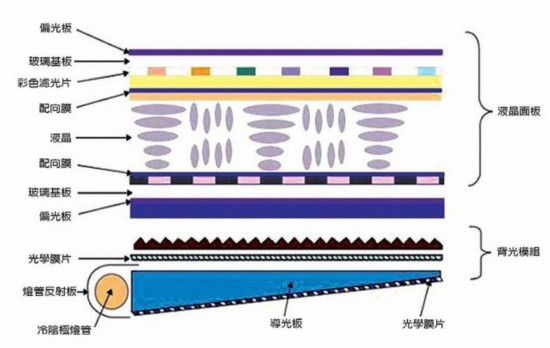
LCD Basic Structure
LCD needs backlight support when displaying, and light has to pass through two layers of glass and substrate and various optical films, alignment films, and color filters to produce polarized light, which inevitably leads to loss of brightness and color.The TFT,
the abbreviation of Thin-Film Transistor, in LCD, TFT deposits a thin film on the glass substrate as a channel area, and improves image quality through thin film transistor technology.
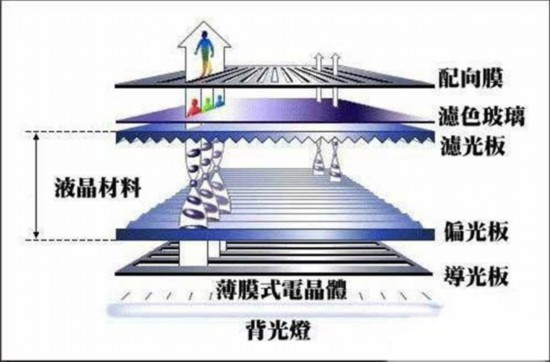
Eye Protection of LCD screens : LCD screens usually use DC dimming, which has uniform screen brightness, is less likely to cause visual fatigue, and is more friendly to the eyes. At the same time, LCD screens do not have the problem of screen burn-in,
which is an important advantage for users who use mobile phones for a long time.
Contrast and viewing angle: Although LCD screens may not be as good as OLED screens in terms of contrast and viewing angle, they usually perform better in bright environments and put less pressure on the eyes.
二:OLED Screens
OLED (Organic Light Emitting Display) screen, it is not that complicated. Unlike LCD, OLED has the characteristics of self-luminescence, and has the advantages of wide viewing angle, high contrast, low power consumption, high response rate, full color, and simple process. According to the driving method, OLED can be divided into passive OLED (PMOLED) and active OLED (AMOLED). In recent years, with the continuous advancement of technology and the reduction of costs, AMOLED screens have gradually become mainstream mobile phone screens.
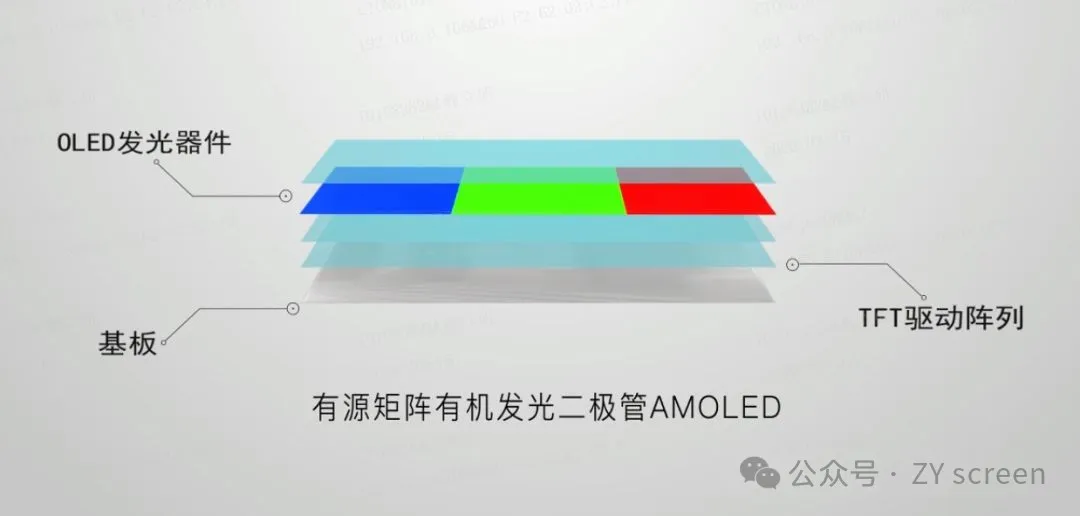
AMOLED uses Pen tile pixel arrangement, which results in a stronger sense of grain at the same resolution. In addition, because of the lack of backlight support, the brightness of the AMOLED screen can only be supported by self-luminous pixels, so the performance of the AMOLED screen is average in outdoor environments.
At present, AMOLED screens have roughly developed into three generations: AMOLED, Super AMOLED, and Super AMOLED Plus. Compared with traditional AMOLED, Super AMOLED cancels the architectural design of the touch sensing layer and the display layer, and is directly a native touch panel, which can bring more sensitive operation, and the response speed is one thousandth of other materials. In addition, the absence of a glass cover also brings better display effects in sunlight and brighter color expression. Thus, it makes up for all the shortcomings of the previous two screen materials.
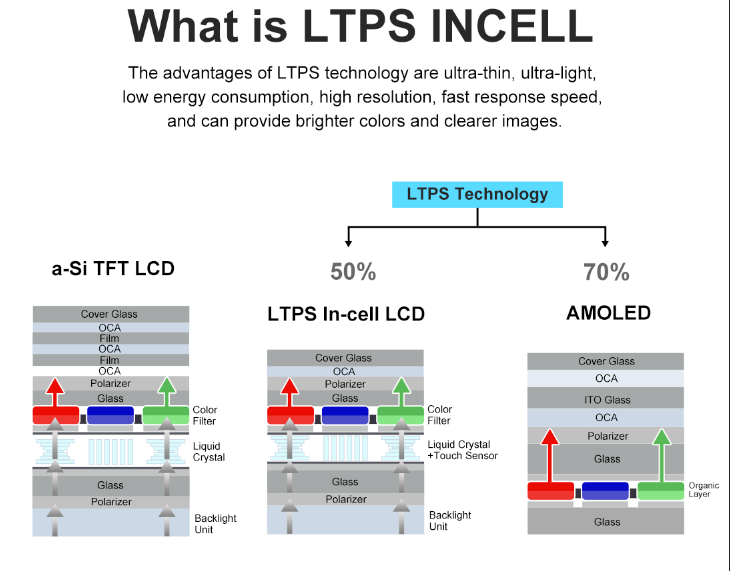
Super AMOLED Plus further improves the Pen tile pixel arrangement of the previous Super AMOLED screen, and the RGB arrangement is more delicate, solving the problem of large display particles criticized by many users. In addition to the improvement of resolution, the display effect is also developing in a more refined direction.
Bright colors: The color performance of the OLED screen is excellent, with deep black and high color contrast, which can present a more delicate picture effect.
Flexible display: OLED screen has the characteristics of flexible display and can be applied to new mobile phone designs such as curved screens and folding screens, bringing users a richer using experience.
Power saving: OLED screens are capable of self-illuminating and each pixel can be independently controlled on/off, allowing for more precise brightness control and more energy-efficient display effects.
三、 AMOLED Screen
AMOLED (Organic Light Emitting Display) screen, that is, active matrix organic light emitting diode screen, is an improved version of OLED screen. AMOLED screen adds active matrix driving circuit based on OLED screen, making the screen smoother and clearer when displaying dynamic images. In addition, AMOLED has the characteristics of self-luminescence, and has the advantages of wide viewing angle, high contrast, low power consumption, high response rate, full color, and simple process. However, prolonged use of AMOLED screens may cause screen burn-in, and it puts extra strain on the eyes. Finally, the high cost makes the AMOLED screen price relatively expensive.
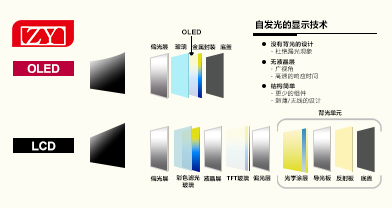
In addition to LCD, OLED and AMOLED screens, some new screen technologies are constantly developing. For example:
Mini LED screen: Mini LED screen uses smaller LED lamp beads as the backlight source, which can achieve more precise brightness control and higher contrast performance. At the same time, Mini LED screen also has the advantages of low power consumption and long life.
Micro LED screen: Micro LED screen is a more advanced display technology that uses micrometer sized LED beads as pixels, which can achieve higher resolution and more delicate display effects. However, the technical difficulty and cost of Micro LED screens are still relatively high, and they have not yet been widely applied.
In summary, the mainstream types of mobile phone screens mainly include LCD, OLED, AMOLED, as well as emerging screen technologies such as Mini LED and Micro LED. Each type has its unique characteristics and advantages, and users can choose the appropriate screen type for your phone according to your needs.






